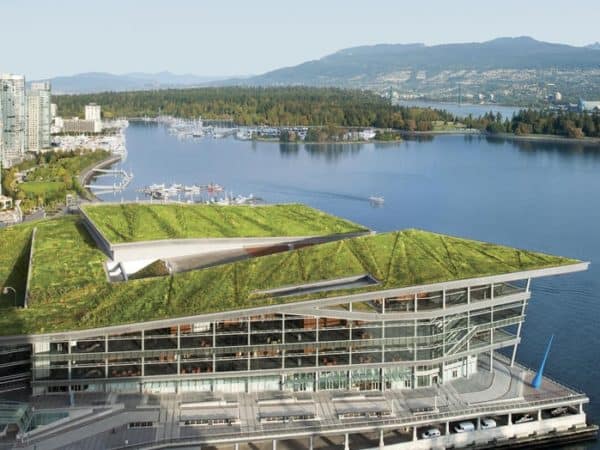

Green roofing, Is it more useful than we even imagined?
A new study from the University of Toronto says that green roof technology could help solve the problem of extreme weather events which more and more are pushing sewer infrastructure in our cities to the limit. Researchers find that green roofs on urban buildings can retain an average of 70 per cent of rainfall over a given period, drastically reducing the amount of stormwater that ends up in city sewers and lowering the chances of flooding.
Climate scientists have already delivered the weather forecast for the near, if not distant, future: more rain.
As global warming continues to heat up the planet, greater amounts of water vapour will get taken up by the warmer air, causing more frequent, more intense rainfalls for many parts of the globe (drier regions will become even more parched, however). Experts predict that for every degree Celsius that the Earth grows hotter, precipitation rates will shoot up between five and ten per cent.
That spells trouble not just for farmers and baseball fans but city planners, as well, who’ll have to cope with more storm surges and heavy rains and more chance of sewers overflowing onto city streets and into lakes and rivers.
“In our opinion, green roofs are the optimal urban green infrastructure due to their multi-functionality…”
Fortunately, though, we have green roofs to not only cut down on noise and air pollution, take away some of the summer heat, gobble up greenhouse gases and look pretty good in the process, they also do a much better job than concrete at sponging up rainfall.
“In our opinion, green roofs are the optimal urban green infrastructure due to their multi-functionality,” say the new study’s authors, all researchers with the GRIT Lab (Green Roof Innovation Testing Lab) at the University of Toronto, in the academic research news source the Conversation Canada.
The study put 24 variations on green roof technology to the rainfall test over the May to October periods of both 2013 and 2014, measuring hydrological performance under rainstorm conditions and accounting for factors such as irrigation, medium type, medium depth and vegetation.
The results showed that on average, green roofs retain 70 per cent of the precipitation that comes down, enough for an 85 to 90 per cent increase in capacity to hold water in comparison to standard impermeable roof surfaces.
The researchers further calculated that retention capacity increases when irrigation of the green roof is changed from daily irrigation to sensor-activated (when the soil reaches a certain level of moisture content) or no irrigation at all. In terms of soil type, the study found that contrary to the currently accepted guidelines for green roofing, wood compost is better than a mineral aggregate soil at keeping in the moisture, outperforming the mineral substrate by up to three times when fully saturated.
“As storm events become more frequent and severe for municipalities, cities with aging stormwater infrastructure like Toronto are struggling to find ways to alleviate the impact,” say the study’s authors. “Green roofs can be a part of this solution, but all green roofs are not created equal. The proper research and knowledge is essential.”
The new study is published in the Journal of Hydrologic Engineering.
Leave a Reply
You must be logged in to post a comment.



 Share
Share Tweet
Tweet Share
Share




Comment